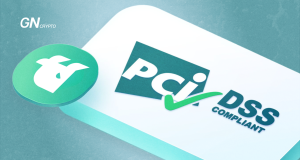How long does it take to mine one bitcoin?

Can Johnny divide the distance by speed to find the time like he used to do? ? When talking about the time taken to mine bitcoins, not everything is so definite. Let’s figure it out.
Bitcoin
BTC (aka “bitcoins”) appear due to a number of complex mathematical calculations performed by miners’ computers. As you know (if you don’t know, no problem, we will tell you about it in our new article), the bitcoin network issuing policy is built so that new coins appear as a bonus for miners.
The logic of the process is simple: miners provide computing power for the network’s algorithm to function, and in return, they receive a number of coins determined by the same algorithm.
Why do miners work for bitcoins?
BTCs are pretty valuable: at the moment, each token costs about $20,000, but only 21 million of them will be mined over the whole history, and 19 million of them already have owners. Thus, the entire mining industry is now focused on mining the other two million BTCs. And, if the price of BTC doesn’t change, miners will compete for $40 billion.
However, the price of bitcoin is constantly changing, so miners’ work becomes more or less profitable because they have to spend resources (electricity, equipment, rental of premises, staff salaries). Therefore, many miners shut down their activity during bear markets, while during bull markets, they expand it. The network hash rate also changes because of this.
The complexity of mining
To ensure that the stability of the network does not depend on the volume of available computing power, Satoshi Nakamoto, the creator of bitcoin, invented a variable that makes the calculations easier or harder, depending on the changes in the hash rate. As a result, the speed of finding a block is always about the same (about 10 minutes).
One might think that it should mean that the mining time for new bitcoins will always be the same. Because if there is a new block – then there is a bonus for miners. But it is not entirely true.
You have to remember that bitcoin is a currency. And currencies tend to inflation. To neutralize this factor, Nakamoto invented halving.
Halving
Every 210,000 blocks, the miners’ reward is reduced by precisely 2 times. Since blocks are formed at a known speed, we also know the approximate halving time: once every four years.
The next halving in the network is expected in the spring of 2024, and miners will receive 3.125 BTC instead of 6.25 BTC for each block found. Hence, in 2028 this figure will also be halved. And this model remains until the last bitcoin is found.
It turns out that to answer the question in the headline, the only thing that Johnny should know is the halving period of bitcoin. In that case, he will also learn how many new coins are mined every 10 minutes. At this point, the number is 6.25 bitcoins. So, it takes about 1.6 minutes for one bitcoin to appear. And this answer will be correct until 2024.
The content on The Coinomist is for informational purposes only and should not be interpreted as financial advice. While we strive to provide accurate and up-to-date information, we do not guarantee the accuracy, completeness, or reliability of any content. Neither we accept liability for any errors or omissions in the information provided or for any financial losses incurred as a result of relying on this information. Actions based on this content are at your own risk. Always do your own research and consult a professional. See our Terms, Privacy Policy, and Disclaimers for more details.

























